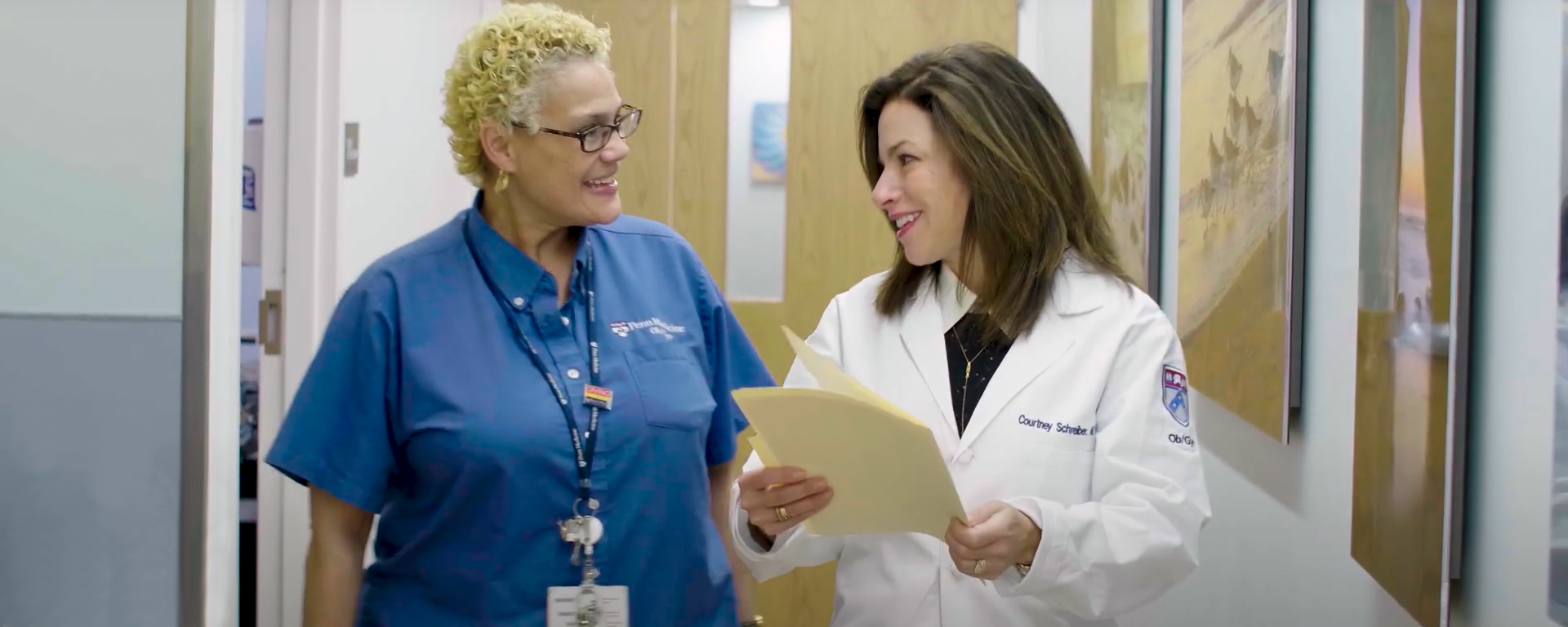
PEACE
Project status
Collaborators
Courtney Schreiber, MD, MPH
Jennifer Moore-Conrow, MFS
Arden McCallister, MPH
Shayna Nagel, RN
Janet Williams
Innovation leads
Funding
Innovation Accelerator Program
Opportunity
Miscarriage is the most common pregnancy complication, affecting one in five pregnancies. Improved technology in home testing means that women know sooner than ever that they are pregnant.
Despite this, prenatal care does not start until late in the first trimester, leaving many patients unsure about where to turn if they suspect a problem early on. This uncertainty, paired with the difficulty patients face in accessing timely outpatient services, leads to high utilization rates of emergency services when miscarriage symptoms occur. Unfortunately, using the emergency department (ED) in this case can lead to delays in care and emotional distress.
Intervention
The Penn Medicine Pregnancy Early Access Center (PEACE) bridges the gap between a positive pregnancy test and the start of prenatal care by providing timely, evidence-based, compassionate care in an office-based setting to women experiencing early pregnancy complications.
PEACE utilizes a custom triage tool that can be deployed in-person, over the phone, or online to determine which patients can be seen safely in an outpatient setting vs. patients who should present to the ED.
When patients qualify for PEACE services, experts step in to diagnose the issue and intervene quickly. Instead of waiting for hours in the ED, PEACE patients are offered access to same-day, walk-in, and after-hours services.
Impact
PEACE improves patient experience, enhances quality of care, and resolves complications faster by streamlining access. The model also reduces the cost associated with miscarriage, saving an estimated $500 per case.
PEACE services are currently available at the Hospital of the University of Pennsylvania, Penn Medicine Washington Square, and Penn Medicine Cherry Hill. And in 2022, the team received a grant from Independence Blue Cross to support expansion efforts of the PEACE program to other health systems.
Innovation Methods
Vapor test
Vapor test
Vapor test
Vapor test
We iteratively developed and tested a triage tool to determine which patients could be seen safely in an outpatient setting versus patients who should present to the ED.
We piloted an initial version in person in the ED, with providers identifying and completing the triage tool as if they could refer the patient to PEACE. Through chart review, we validated whether the decision that would have been made using the tool was appropriate for the patient based on the outcome of their ED visit and subsequent follow-up.
We modified the tool several times based on lessons learned and expanded testing to phone-based triage at two OB practices. Through this process, we validated that the information gathered over the phone was adequate to triage patients appropriately.